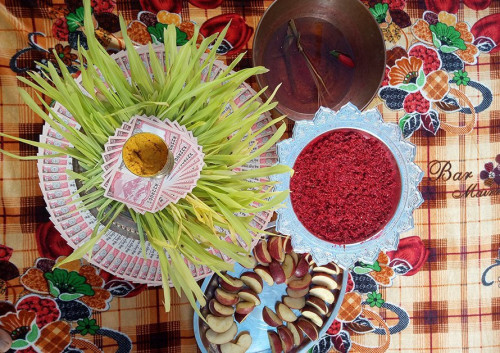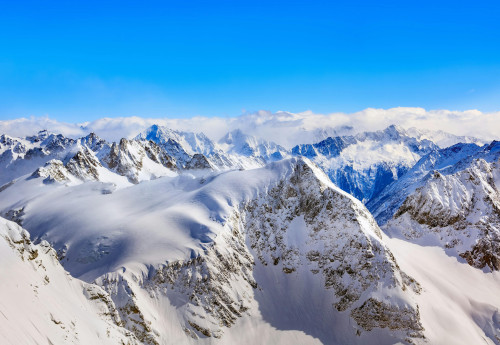11th Jun, 2023
5 Best Trekking Routes in Nepal for Senior Citizens
- Magnificent Himalayan Treks
Many people think trekking in Nepal is just for young adventurers. But that's not true! Nepal offers amazing hikes perfect for older travelers who want to experience breathtaking Himalayan scenery and engage themselves in charming Nepali villages. This article explores 5 of the best trekking routes in Nepal for senior citizens, all known for their gentle walks, stunning mountain views, and rich cultural experiences.
Hiking in Nepal: Great for Body and Mind!
Walking in nature is fantastic for older adults! It helps them stay fit and healthy by keeping their heart strong and muscles and bones in good shape. Trekking in Nepal's beautiful mountains adds another bonus: peace of mind. The fresh air and amazing scenery can help reduce stress and leave you feeling refreshed!
Factors to Consider for Senior- Friendly Trekking Routes
When selecting trekking routes for senior citizens, certain factors must be taken into account. These include the difficulty level of the trek, altitude considerations, availability of basic amenities, safety measures, and cultural experiences. By considering these factors, we can ensure a comfortable and enjoyable trekking experience for seniors.
Best Trekking Routes For Senior Citizens
1. Annapurna Base Camp Trek
Overview of Annapurna Base Camp Trek
While the classic Annapurna Base Camp Trek can be challenging, with careful planning and modifications, it can be an approachable adventure for senior trekkers. This trek offers breathtaking views of the Annapurna range, including majestic peaks like Machhapuchhre (better known as Fishtail) and Annapurna I. The trail winds through lush forests, terraced fields, and traditional villages, providing a glimpse into the local way of life. Unlike some high-altitude treks, the Annapurna Base Camp Trek offers the comfort of teahouses and lodges along most of the route, providing comfortable accommodation and delicious meals. Senior trekkers can also enjoy cultural experiences in villages along the way, engaging themselves in the rich traditions of the Himalayas.
| Trip Location: | Annapurna Region |
| Maximum Elevation: | 4130m / 13549ft at Annapurna Base Camp |
| Trip Duration: | 10 Days |
| Trip Difficulty: | Moderate |
| Best Season: | Feb, Mar, Apri, May, June, Sep, Oct, Nov & Dec |
| Start/End: | Kathmandu / Kathmandu |
| Accomodation: | Teahouse |
| Trek Restrictions: | No Restrictions |
| Trek Permits: | ACAP , TIMS |
2. Everest View Trek
Introduction to Everest View Trek
For senior citizens who dream of witnessing the majestic Mount Everest up close, the Everest View Trek offers a captivating alternative to the Everest Base Camp Trek. This trek allows you to experience the breathtaking beauty of the Everest region on easier paths with comfortable lodges, perfect for gradual acclimatization. Imagine waking up to breathtaking sunrises over snow-capped peaks, all without the strenuous climbs. The Everest View Trek promises an unforgettable Himalayan adventure for trekkers of all ages, especially those seeking a more relaxed pace.
| Trip Location: | Everest Region |
| Maximum Elevation: | 3956 m/ 12979 ft at Tengboche |
| Trip Duration: | 7 Days |
| Trip Difficulty: | Easy |
| Best Season: | Feb, Mar, Apri, May, June, Sep, Oct, Nov & Dec |
| Start/End: | Kathmandu / Kathmandu |
| Accomodation: | Teahouse |
| Trek Restrictions: | No Restrictions |
| Trek Permits: | TIMS, Sagarmatha National Park Entry Permit |
3. Langtang Valley Trek
Overview of Langtang Valley Trek
The Langtang Valley Trek offers a captivating journey through Nepal's Langtang region, renowned for its attractive landscapes and dramatic mountain vistas. This trek is a perfect choice for senior citizens seeking a moderate challenge with breathtaking natural beauty and cultural encounters. The trails boast gentle slopes and well-maintained paths, ideal for a comfortable pace. Plus, the lower altitude compared to other Himalayan treks makes acclimatization easier for seniors. Along the way, discover charming villages steeped in tradition and immerse yourself in the rich culture of the Himalayas. Comfortable lodge stays and stunning mountain views throughout the trek confirm an unforgettable adventure for senior trekkers.
| Trip Location: | Langtang Region |
| Maximum Elevation: | 4773m / 15655ft at Kyangjin Ri |
| Trip Duration: | 8 Days |
| Trip Difficulty: | Moderate |
| Best Season: | Feb, Mar, Apri, May, June, Sep, Oct, Nov & Dec. |
| Start/End: | Kathmandu / Kathmandu |
| Accomodation: | Teahouse |
| Trek Restrictions: | No Restrictions |
| Trek Permits: | TIMS, Langtang National Park Permit |
4. Ghorepani Poon Hill Trek
Introduction to Ghorepani Poon Hill Trek
While Nepal boasts many thrilling treks, the Ghorepani Poon Hill Trek is perfectly tailored for senior adventurers seeking an unforgettable Himalayan experience. This trek provides breathtaking sunrise panoramas from the iconic Poon Hill viewpoint, all without requiring active climbs. The well-maintained trails are gentle on the knees, and comfortable teahouses offer a warm welcome and delicious meals throughout your journey. Engage yourself in the rich culture of the Gurung people, encountering their traditional villages nestled among stunning landscapes. The Ghorepani Poon Hill Trek promises a perfect mixture of scenic beauty, cultural immersion, and a relaxed pace, making it an ideal choice for senior trekkers.
| Trip Location: | Annapurna Region |
| Maximum Elevation: | 3210m / 13549ft at Poonhill |
| Trip Duration: | 7 Days |
| Trip Difficulty: | Easy |
| Best Season: | Feb, Mar, Apri, May, June, Sep, Oct, Nov & Dec |
| Start/End: | Kathmandu / Kathmandu |
| Accomodation: | Teahouse |
| Trek Restrictions: | Restriction |
| Trek Permits: | ACAP , TIMS |
5. Upper Mustang Trek
Overview of Upper Mustang Trek
The Upper Mustang Trek offers a amazing journey for experienced senior trekkers seeking a unique and adventurous experience. This restricted region, once an ancient Tibetan kingdom, is renowned for its well-preserved culture and dramatic landscapes. Explore monasteries decorated with prayer flags, wander through traditional villages, and soak in the unique atmosphere of Mustang. While the full trek can be demanding, there might be options for shorter stays or alternative routes within Upper Mustang trek that provide to a more senior audience. It's best to consult with a trekking agency to find the most suitable itinerary for your fitness level.
| Trip Location: | Annapurna Region |
| Maximum Elevation: | 3810m / 12135ft at Lo Manthang |
| Trip Duration: | 14 Days |
| Trip Difficulty: | Moderate |
| Best Season: | April, May, June, July, August, Sep, Oct, Nov |
| Start/End: | Kathmandu / Kathmandu |
| Accomodation: | Teahouse |
| Trek Restrictions: | Restrictions |
| Trek Permits: | Upper Mustang Restricted Area special Trekking Permit , TIMS |
Recommended Trekking Gear for Senior Citizens
Importance of appropriate trekking gear
Having the right trekking gear is essential for the comfort, safety, and overall enjoyment of senior trekkers. Appropriate gear protects against extreme weather conditions, provides stability and support, and ensures adequate hydration and nutrition during the trek.
Comfortable footwear and clothing recommendations
Investing in comfortable and well-fitting trekking boots is crucial for senior trekkers. Opt for boots that provide ankle support, a sturdy sole, and waterproof capabilities. Layered clothing is also important, allowing seniors to adapt to changing weather conditions. Moisture-wicking base layers, insulating mid-layers, and a waterproof outer shell are recommended.
Lightweight backpack essentials
When packing for a trek, it is essential for senior trekkers to keep their backpacks lightweight and well-organized. Essential items include a first aid kit, water bottle, snacks, extra clothing layers, headlamp, trekking poles, sunscreen, hat, sunglasses, and a camera to capture the beautiful moments along the journey.
Trekking poles and their benefits
Trekking poles provide stability and support, particularly on uneven terrains and steep descents. They help reduce strain on joints, improve balance, and distribute weight evenly, reducing the risk of falls or injuries. Adjustable trekking poles with shock-absorbing features are highly recommended for senior trekkers.
Tips for packing efficiently
Packing efficiently is crucial to ensure a comfortable trekking experience. Senior trekkers should pack only the essentials, avoiding unnecessary weight. Rolling clothes instead of folding saves space and keeps items organized. It is also advisable to pack items in waterproof bags to protect them from rain or accidental spills.
Physical Preparation for Senior Citizens
Importance of physical fitness before trekking
Being in good physical condition before embarking on a trek is crucial for senior citizens. Regular exercise and strength training help improve cardiovascular fitness, muscle strength, and endurance, enabling seniors to tackle the physical challenges of trekking with ease.
Regular exercise and strength training recommendations
Prior to the trek, senior trekkers should engage in a regular exercise routine that includes cardiovascular exercises such as walking, swimming, or cycling. Strength training exercises, focusing on the lower body and core muscles, help improve stability and balance. Consultation with a healthcare professional or a personal trainer can provide tailored recommendations based on individual capabilities.
Cardiovascular fitness and endurance exercises
Improving cardiovascular fitness is vital for senior trekkers, as it enhances stamina and endurance. Activities such as brisk walking, hiking, or using an elliptical machine can be beneficial. Gradually increasing the duration and intensity of these exercises helps build cardiovascular strength over time.
Stretching and flexibility exercises
Flexibility and stretching exercises are essential to improve joint mobility and reduce the risk of muscle strains or injuries during the trek. Senior trekkers should incorporate activities like yoga, Pilates, or gentle stretching routines into their fitness regimen. These exercises help maintain suppleness and ease muscle tension.
Consultation with a healthcare professional
Before embarking on a trek, senior trekkers should consult with a healthcare professional to assess their overall health and ensure they are physically capable of undertaking the journey. This is particularly important for individuals with pre-existing medical conditions, as adjustments or precautions may be necessary.
Mental Preparation and Mindset for Trekking
Building confidence and positive mindset
Having a positive mindset and building confidence are essential for a successful trekking experience. Senior trekkers should focus on their strengths, set realistic expectations, and embrace the challenges that come with the journey. Cultivating a positive attitude helps overcome obstacles and enjoy the transformative power of trekking.
Setting realistic expectations
Setting realistic expectations is important to avoid undue stress or disappointment during the trek. Senior trekkers should acknowledge their limitations, take breaks when needed, and listen to their bodies. It is essential to find a balance between pushing oneself and ensuring personal well-being throughout the trek.
Mindfulness and meditation techniques
Practicing mindfulness and meditation techniques can enhance the trekking experience for senior citizens. Engaging in moments of stillness, deep breathing, and mindful observation of the surroundings allows trekkers to connect with nature and cultivate a sense of inner peace and tranquility.
Coping with altitude-related challenges
Altitude-related challenges, such as low oxygen levels and symptoms of altitude sickness, can affect trekkers at higher elevations. Senior citizens should be aware of the symptoms and follow proper acclimatization guidelines. Adequate hydration, gradual ascent, and listening to the advice of experienced guides help minimize altitude-related risks.
Importance of travel companions and support system
Having travel companions or joining a trekking group provides emotional support, companionship, and safety during the journey. Senior trekkers can share the joys and challenges with like-minded individuals, creating lasting memories and forging new friendships. The presence of a support system adds an extra layer of confidence and comfort.
Safety Tips for Senior Citizen Trekkers
Acclimatization guidelines and altitude sickness prevention
Proper acclimatization is crucial to prevent altitude sickness among senior trekkers. This involves allowing the body time to adjust to increasing altitudes by following a gradual ascent profile, staying hydrated, and avoiding overexertion. It is important to listen to one's body and communicate any discomfort or symptoms to the trekking guide.
Hydration and nutrition recommendations
Staying hydrated is essential for overall health and well-being during a trek. Senior trekkers should drink plenty of fluids, even if they do not feel thirsty, to prevent dehydration. Proper nutrition is also important, with a focus on balanced meals that include carbohydrates, proteins, and healthy fats to sustain energy levels.
Sun protection and proper use of sunscreen
The Himalayan region is known for its strong sunlight, even at higher altitudes. Senior trekkers should protect their skin and eyes from harmful UV rays by wearing a wide-brimmed hat, sunglasses, and applying a high SPF sunscreen on exposed skin. This reduces the risk of sunburn, skin damage, and eye strain.
Emergency communication devices and contacts
Carrying emergency communication devices, such as a satellite phone or a personal locator beacon (PLB), is advisable for senior trekkers. These devices allow for communication in remote areas where regular cell phone reception may be limited. It is also important to have emergency contact numbers readily available for quick assistance.
Trekking with a trained guide or porter
For senior trekkers, trekking with a trained guide or porter provides an added layer of safety and support. Experienced guides are familiar with the terrain, weather conditions, and potential risks. They can offer guidance, assist with navigation, and provide first aid if needed. Having a porter to carry the bulk of the weight alleviates physical strain for seniors, allowing them to focus on enjoying the journey.
Preparing for the Cultural Experience
Understanding Nepalese customs and traditions
Before embarking on a trek, senior trekkers should familiarize themselves with Nepalese customs and traditions. This includes learning about greeting customs, appropriate clothing choices, and respect for religious sites and cultural practices. Having a basic understanding of local etiquette helps foster positive interactions with the local communities.
Learning basic Nepali phrases and greetings
Learning a few basic Nepali phrases and greetings can go a long way in bridging the communication gap and showing respect to the local people. Simple phrases like "Namaste" (hello), "Dhanyabad" (thank you), and "Sundar" (beautiful) can create a friendly atmosphere and enhance cultural exchange.
Respecting local culture and religious sites
Senior trekkers should be mindful of local customs and religious practices when visiting cultural and religious sites. It is important to dress modestly, remove shoes when required, and seek permission before entering sacred areas. Respecting local traditions fosters a sense of mutual understanding and appreciation.
Etiquette for interacting with locals
Interacting with locals in a respectful and courteous manner is key to fostering positive relationships. Senior trekkers should ask permission before taking photographs of individuals or their homes. Engaging in friendly conversations and showing genuine interest in the local culture helps create meaningful connections.
Cultural dos and don'ts
To ensure a culturally sensitive experience, senior trekkers should be aware of certain dos and don'ts. It is considered respectful to accept food or drinks with the right hand, avoid pointing at people with the index finger, and refrain from public displays of affection. By observing these cultural norms, senior trekkers can forge positive connections and show appreciation for the local culture.
Best Time to Trek in Nepal for Senior Citizens
Nepal offers various trekking seasons, each with its own unique charm and considerations. Understanding the characteristics of different seasons helps senior trekkers choose the best time to embark on their trekking adventure.
Ideal weather conditions for senior trekkers
For senior trekkers, the best time to trek in Nepal is during the spring (March to May) and autumn (September to November) seasons. These seasons offer stable weather conditions with moderate temperatures, clear skies, and minimal rainfall. The pleasant weather enhances the trekking experience and provides optimal visibility for enjoying the scenic beauty.
Avoiding peak tourist seasons
The spring and autumn seasons are popular among tourists, resulting in increased crowds and higher demand for accommodations along popular trekking routes. Senior trekkers who prefer a quieter and more serene experience may consider trekking during the shoulder seasons, such as late winter or early autumn. These periods offer a balance between favorable weather and fewer crowds.
Considering off-season advantages and disadvantages
The off-seasons, including the monsoon season (June to August) and winter (December to February), have their own advantages and disadvantages for senior trekkers. The monsoon season brings lush green landscapes and fewer trekkers, but also increased rainfall and leeches. Winter offers clearer skies and uncrowded trails, but colder temperatures and limited tea house availability at higher elevations.
Weather forecasts and planning considerations
Before embarking on a trek, senior trekkers should check weather forecasts and plan accordingly. Monitoring weather conditions ensures preparedness for possible changes and allows for adjustments in the itinerary if necessary. It is advisable to consult with local guides or trekking agencies for accurate and up-to-date weather information.
Travel Insurance for Senior Trekkers
Importance of travel insurance coverage
Having comprehensive travel insurance is essential for senior trekkers. It provides financial protection and peace of mind in case of unexpected events or emergencies during the trek. Travel insurance coverage typically includes medical expenses, emergency evacuation, trip cancellation or interruption, and loss or theft of belongings.
Medical and emergency evacuation coverage
Senior trekkers should ensure that their travel insurance policy includes adequate medical coverage, including emergency medical expenses and evacuation if required. The policy should cover expenses related to altitude sickness, accidents, and unforeseen illnesses that may arise during the trek.
Policy considerations for trekking activities
When purchasing travel insurance, senior trekkers should carefully review the policy to ensure it covers trekking activities in Nepal. Some insurance providers may have specific exclusions or limitations related to high-altitude trekking. Reading the policy terms and conditions helps in understanding the coverage provided and any applicable restrictions.
Pre-existing medical conditions and coverage limitations
Senior trekkers with pre-existing medical conditions should disclose their conditions when obtaining travel insurance. It is important to understand any coverage limitations or exclusions related to pre-existing conditions. Some insurance providers may offer coverage with certain restrictions or require a medical assessment before approving coverage.
Researching reputable insurance providers
To ensure reliable coverage, senior trekkers should research reputable insurance providers that specialize in adventure travel or trekking activities. Reading reviews, comparing coverage options and premiums, and seeking recommendations from fellow trekkers or travel agencies can help in selecting a suitable insurance provider.
Tips for Responsible Trekking
Leave No Trace Principles
Responsible trekking involves adhering to the Leave No Trace principles. Senior trekkers should minimize their impact on the environment by packing out all waste, avoiding littering, and refraining from damaging natural or cultural sites. Respecting the pristine beauty of the trekking routes ensures their preservation for future generations.
Proper waste disposal and environmental care
Senior trekkers should carry a small garbage bag and dispose of waste properly in designated areas. It is essential to follow the waste management practices of the tea houses or lodges along the trek, ensuring that waste is segregated and disposed of responsibly. Minimizing plastic usage and carrying reusable water bottles contribute to environmental conservation.
Respect for local communities and traditions
Showing respect for the local communities is an integral part of responsible trekking. Senior trekkers should be mindful of their behavior, dress modestly, and seek permission before taking photographs of individuals or their homes. Respecting local customs, traditions, and cultural practices fosters positive interactions and cultural exchange.
Supporting local businesses and services
Choosing local tea houses, guides, porters, and trekking agencies supports the local economy and ensures that the benefits of tourism are shared with the local communities. Senior trekkers should opt for locally owned accommodations and purchase locally made handicrafts or souvenirs, contributing to the sustainable development of the region.
Sustainable trekking practices
Practicing sustainable trekking means minimizing the ecological footprint and preserving the natural and cultural heritage of the trekking routes. Senior trekkers should conserve water, use energy efficiently, and avoid excessive noise pollution. By embracing sustainable practices, they become ambassadors for responsible tourism and contribute to the long-term conservation of Nepal's trekking destinations.
Training and Preparation Resources for Senior Trekkers
Trekking organizations and training programs
Several trekking organizations and training programs cater specifically to senior trekkers. These organizations offer comprehensive training, preparation, and support for individuals who wish to embark on treks in Nepal. Joining such programs ensures that senior trekkers are well-prepared physically, mentally, and logistically for their journey.
Fitness and wellness resources for seniors
Senior trekkers can benefit from fitness and wellness resources designed specifically for their age group. These resources provide exercise routines, dietary guidance, and tips for maintaining physical and mental well-being. Incorporating these resources into their preparation regimen helps optimize fitness levels and overall trekking performance.
Online forums and communities for senior trekkers
Online forums and communities provide a platform for senior trekkers to connect with like-minded individuals, share experiences, and seek advice. Participating in these communities allows seniors to gather insights, learn from the experiences of others, and find support throughout their trekking journey.
Trekking guidebooks and literature recommendations
Guidebooks and literature dedicated to trekking in Nepal are valuable resources for senior trekkers. These books provide detailed information about trekking routes, terrain, culture, and safety considerations. Senior trekkers can choose guidebooks that cater specifically to their age group or seek recommendations from experienced trekkers.
Personal accounts and stories from senior trekkers
Reading personal accounts and stories from senior trekkers who have successfully completed treks in Nepal can be inspiring and informative. These narratives offer insights into the challenges, rewards, and unique experiences that senior trekkers can expect along their journey. Learning from the experiences of others helps in preparation and mental readiness.
Trekking logistics and practical inquiries
Senior trekkers may have logistical inquiries about permits, transportation, accommodation options, and trekking itineraries. Addressing these practical concerns helps seniors plan their trek effectively, ensuring a smooth and hassle-free experience.
Cultural and social considerations
Senior trekkers may have questions about cultural norms, appropriate behavior, and cultural immersion opportunities along the trek. Providing insights into local customs, cultural practices, and recommended etiquette helps seniors engage in meaningful cultural experiences.
Recommended resources for further information
Providing a list of recommended resources, including websites, guidebooks, travel agencies, and trekking organizations, allows senior trekkers to access comprehensive information and seek further guidance for their trekking adventure. These resources serve as references for planning, preparation, and acquiring in-depth knowledge about trekking in Nepal.
Conclusion
Recap of the best trekking routes for senior citizens
In conclusion, Nepal offers a range of trekking routes that cater to the needs and capabilities of senior citizens. The Annapurna Base Camp Trek, Everest View Trek, Langtang Valley Trek, Ghorepani Poon Hill Trek, and Upper Mustang Trek provide unique experiences, stunning landscapes, and cultural immersion opportunities.
Emphasizing the transformative experience of trekking
Trekking in Nepal is not just about conquering mountains; it is a transformative experience that rejuvenates the mind, body, and soul. Senior citizens who embark on these trekking adventures can discover their inner strength, challenge themselves, and create lifelong memories in the midst of nature's splendor.
Encouraging seniors to embrace adventure and exploration
This article encourages senior citizens to step out of their comfort zones, embrace adventure, and embark on treks that suit their age and physical capabilities. It highlights the fact that age should not be a barrier to experiencing the wonders of trekking in Nepal.
Final tips and reminders for a successful trekking experience
Senior trekkers are reminded to prepare adequately, both physically and mentally, before embarking on their journey. They should prioritize safety, listen to their bodies, and respect the environment and local communities. By following these tips, senior trekkers can ensure a successful and rewarding trekking experience.
Closing thoughts and invitation to share experiences
In closing, senior trekkers are encouraged to share their experiences with others, whether through personal accounts, online forums, or social media platforms. By sharing their stories, they inspire and empower fellow seniors to embark on their own trekking adventures, creating a vibrant community of adventurous souls.
Recent From Blog
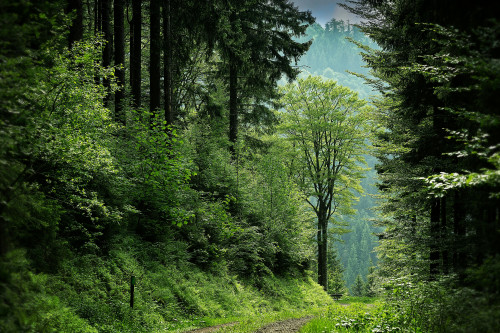
13th Oct, 2025
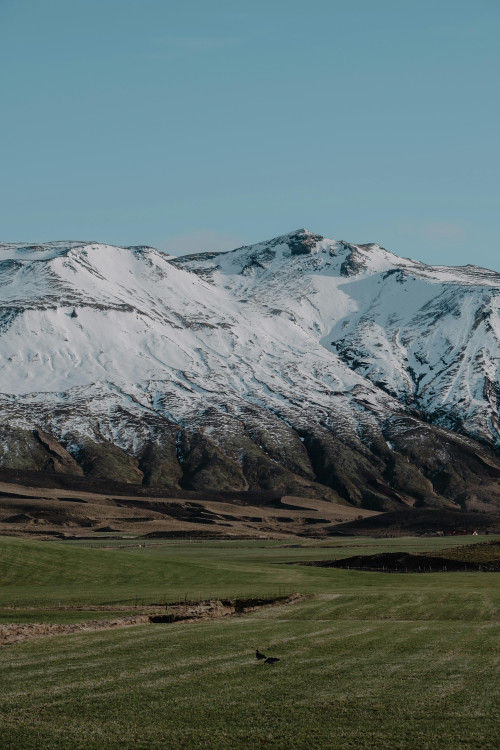
9th Oct, 2025
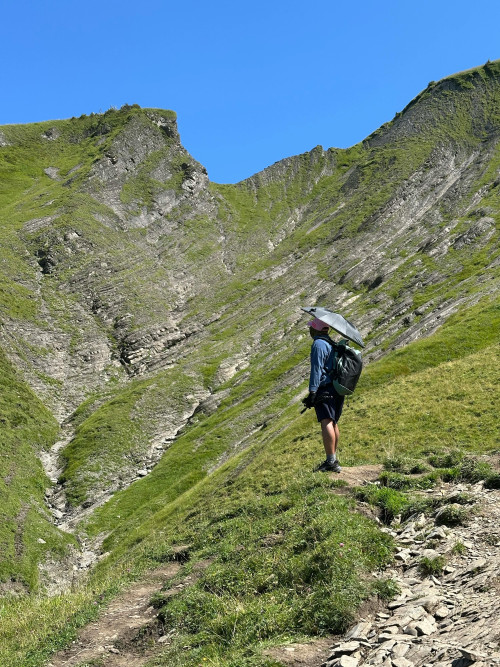
21st Sep, 2025
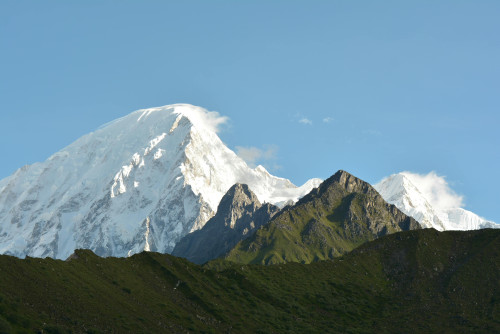
18th Sep, 2025

14th Sep, 2025

3rd Sep, 2025

28th Aug, 2025
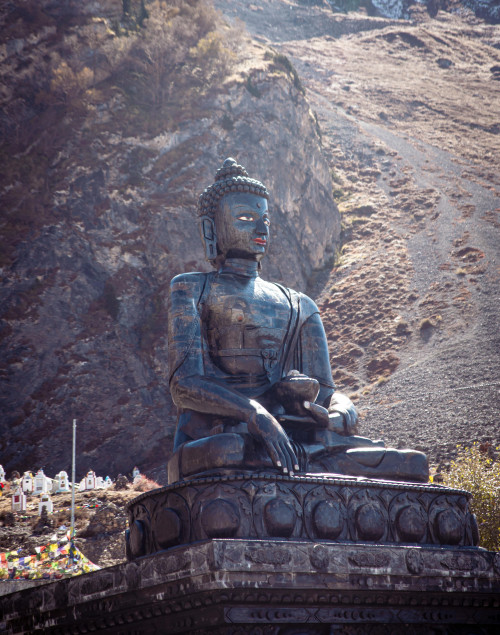
25th Aug, 2025
